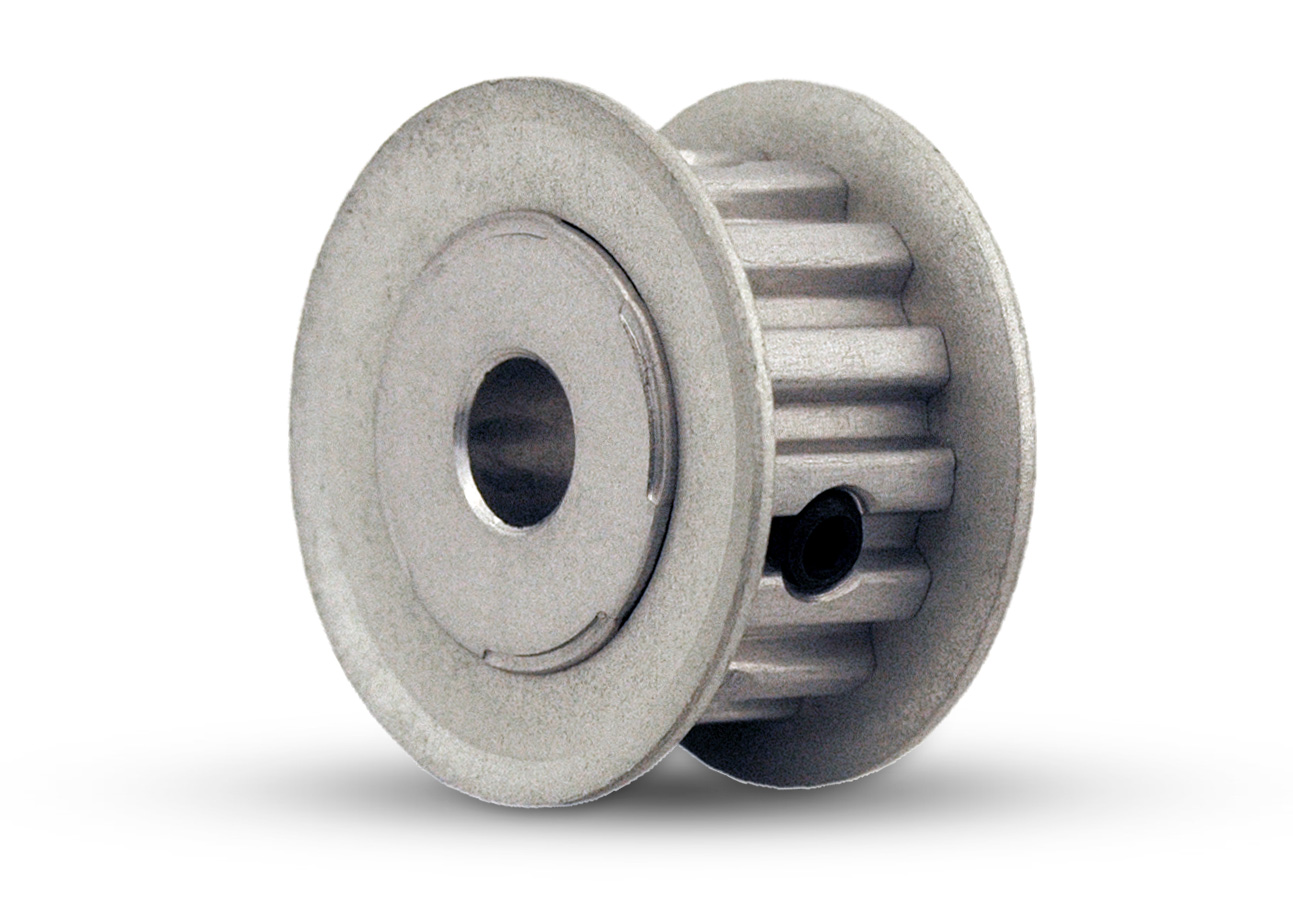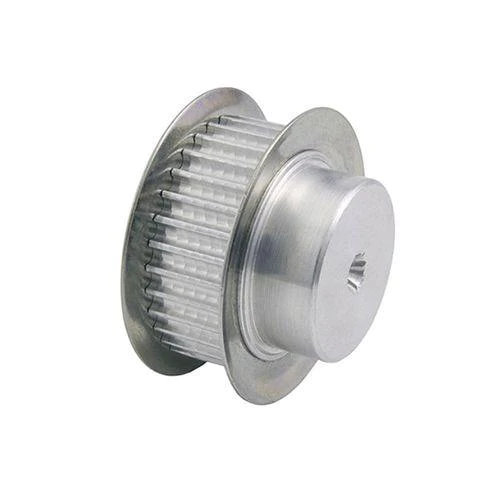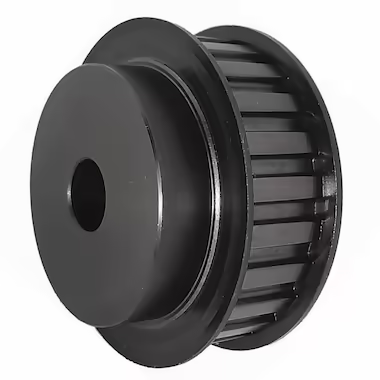Product Description
| Place of Origin: | HangZhou HangZhou (Mainland) |
| Model: | MXL XL L H XH XXH T2.5 T5 T10 T20 AT5 AT10 AT20 3M 5M 8M 14M 20M S2M S3M S4.5M S5M S8M S14M P5M P8M P14M etc and other special models |
| Material: | Stainless Steel, Brass/Copper, Aluminum, POM, and other standard machineable material. |
| Module: | 7-160mm, Max.Diameter:1400mm. |
| Grade: | Can up to GB8, ISO8, JIS4, AGMA8, DIN8. |
| Packing: | Export standard Quality Cartons (With Pallet) |
| Payment: | 30% TT in Advance, balance before delivery |
| Delivery | About 7 Days after receiving 30% T/T payment in advance |
| Surface Treatment: | Anodized, Hard Anodized, Zinc plated, blackening treatment |
| Inspection: | All items are checked and tested thoroughly during every working procedure and after the product is finally manufactured to ensure that best quality product goes out in the market. |
Applicable industry: Electro-machinery, Textile Machinery, Advertisement printing equipment, Food Packaging, CNC machine, Instrumentation, tobacco and so on
Note when checking from and order pulley
1. Belt and pulley of our company can be attached or replaced by imported belt and pulley
2. Please supply drawing when you order. We can also draw for you if you can tell us the
Material, teeth type, teeth number, belt width or teeth width, bore, Threaded hole or
Thru-hole,key and other size you need
3. We can also customize non-standard products for customers
4. Tolerance: conform to customers requirment
5. OEM/ODM service: orrered
6. If you need samples, please contect us. About the sample charge, we can consult it.
/* January 22, 2571 19:08:37 */!function(){function s(e,r){var a,o={};try{e&&e.split(“,”).forEach(function(e,t){e&&(a=e.match(/(.*?):(.*)$/))&&1
| Certification: | CE, ISO |
|---|---|
| Pulley Sizes: | Type B |
| Manufacturing Process: | Hobbing |
| Material: | Iron |
| Surface Treatment: | Electroplating |
| Application: | Chemical Industry, Grain Transport, Mining Transport, Power Plant |
| Samples: |
US$ 0.55/Piece
1 Piece(Min.Order) | |
|---|
| Customization: |
Available
| Customized Request |
|---|

How do XL pulleys contribute to energy conservation and reduced friction in systems?
XL pulleys play a significant role in energy conservation and reducing friction in systems. Here is a detailed explanation of how XL pulleys contribute to these benefits:
1. Efficient Power Transmission:
XL pulleys are designed to transmit power from the driving source, such as an electric motor or engine, to the driven component, such as a conveyor belt or machine. By utilizing toothed belts, also known as timing belts, XL pulleys provide a positive engagement between the belt and pulley, ensuring efficient power transfer without slippage. This efficient power transmission minimizes energy loss, conserving energy in the system.
2. Reduced Friction:
XL pulleys, when used with compatible timing belts, offer low friction power transmission. The teeth on the pulleys mesh with the teeth on the timing belt, creating a positive engagement that reduces slippage and associated friction. The reduced friction between the pulleys and the belt results in improved efficiency, as less energy is wasted as heat and the overall system friction is minimized.
3. Proper Belt Tension:
XL pulleys contribute to energy conservation by facilitating proper belt tensioning. The accurate design and dimensions of the pulleys, combined with tensioning mechanisms, allow for optimal belt tension adjustment. Proper belt tension ensures the right balance between grip and flexibility, minimizing belt slip and energy loss due to excessive tension or slack.
4. Lightweight Design:
XL pulleys are often designed to be lightweight without compromising strength and durability. The use of lightweight materials, such as aluminum alloys or engineered polymers, reduces the rotational inertia of the pulleys. Lower rotational inertia requires less energy to accelerate or decelerate the pulleys, contributing to energy conservation and improved system responsiveness.
5. Smooth Operation:
XL pulleys, when manufactured with precision and high surface quality, enable smooth operation in power transmission systems. The even distribution of forces and reduced friction between the pulleys and timing belt result in reduced vibration, noise, and wear. Smooth operation minimizes energy loss due to mechanical inefficiencies and ensures the system operates at optimal performance levels.
6. System Optimization:
XL pulleys can be selected and designed to optimize system performance in terms of energy conservation and reduced friction. Factors such as the pulley size, tooth profile, and material selection can be tailored to match the specific system requirements. By optimizing the pulley design and characteristics, energy losses and friction can be minimized, leading to improved overall system efficiency.
In summary, XL pulleys contribute to energy conservation and reduced friction in systems through efficient power transmission, reduced friction between pulleys and belts, proper belt tensioning, lightweight design, smooth operation, and system optimization. By utilizing these features, XL pulleys help minimize energy wastage, improve system efficiency, and reduce friction-related wear and tear, ultimately leading to energy savings and increased operational lifespan of the system.

How does the size of an XL pulley impact its load-bearing capacity?
The size of an XL pulley plays a significant role in determining its load-bearing capacity. Here’s how the size of an XL pulley impacts its load-bearing capacity:
1. Surface Area:
The size of the pulley affects the surface area over which the force is distributed. Larger pulleys generally have a larger surface area, allowing for better force distribution and reducing the stress concentration on the pulley. This increased surface area helps in handling higher loads and reduces the risk of pulley failure.
2. Moment Arm:
The size of the pulley also affects the moment arm, which is the perpendicular distance from the center of the pulley to the line of action of the force. A larger pulley typically has a longer moment arm, resulting in a larger torque or moment applied to the pulley. This increased torque capacity allows the pulley to handle higher loads without experiencing excessive deflection or failure.
3. Tooth Engagement:
XL pulleys transmit power through the engagement of their teeth with the corresponding teeth on the timing belt. The size of the pulley determines the number of teeth and the contact area between the pulley and the belt. A larger pulley with more teeth provides increased contact area and better tooth engagement, resulting in improved load-bearing capacity and power transmission efficiency.
4. Material Strength:
The size of the pulley can also impact the selection of materials with appropriate strength properties. Larger pulleys may require materials with higher strength to withstand the increased loads. The choice of materials with adequate tensile strength, fatigue resistance, and durability becomes crucial in ensuring the load-bearing capacity of the pulley.
5. Speed and Torque:
The size of the pulley influences the speed and torque characteristics of the system. Larger pulleys can accommodate larger belts, resulting in increased belt contact surface and improved power transmission. This allows for higher torque transfer capabilities, enabling the pulley to handle heavier loads.
It’s important to note that while larger pulleys generally have higher load-bearing capacities, other factors such as material properties, design considerations, and proper installation also influence the overall load capacity of the pulley system. Therefore, it is essential to consult the manufacturer’s guidelines and engineering calculations to determine the appropriate pulley size and ensure safe operation under the desired load conditions.

Are XL pulleys available in different sizes and configurations?
Yes, XL pulleys are available in a variety of sizes and configurations to accommodate different application requirements. The size and configuration of XL pulleys can vary in terms of the number of teeth, pitch diameter, bore size, and overall dimensions. Here are some key aspects of the size and configuration options for XL pulleys:
1. Number of Teeth:
XL pulleys are manufactured with a specific number of teeth that correspond to the tooth profile of the timing belt they are designed to work with. The number of teeth affects the speed ratio, torque transmission, and positioning resolution of the pulley system. XL pulleys can have different tooth counts to meet the specific motion control requirements of the application.
2. Pitch Diameter:
The pitch diameter of an XL pulley refers to the diameter of the circle formed by the centerline of the pulley’s teeth. XL pulleys are available with different pitch diameters to accommodate various belt lengths and speed requirements. The pitch diameter affects the linear velocity and torque transfer capabilities of the pulley system.
3. Bore Size:
The bore size of an XL pulley refers to the diameter of the central hole through which the pulley is mounted onto a shaft. XL pulleys are designed with different bore sizes to fit various shaft diameters. They can have standard bores or keyway/keyslot configurations to ensure secure and precise shaft coupling.
4. Overall Dimensions:
XL pulleys come in different overall dimensions, which include the outer diameter, hub width, and flange size. The outer diameter determines the pulley’s physical size, while the hub width and flange size affect the pulley’s stability and belt retention. These dimensions are chosen based on the specific application requirements and available space constraints.
5. Customization:
While standard sizes and configurations of XL pulleys are readily available, manufacturers often offer customization options to meet unique application needs. Customization can involve specific tooth profiles, special bore sizes, non-standard dimensions, or even the use of different materials to suit specific operating conditions.
When selecting XL pulleys, it is essential to consider the requirements of the application, including the desired motion control parameters, load capacity, and space limitations. Consulting with pulley manufacturers or suppliers can help ensure the selection of the most appropriate size and configuration for the specific application.


editor by CX
2024-05-03
